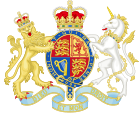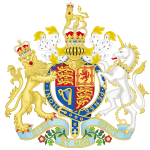- Local Government Act 1929
-
Local Government Act, 1929[1] 
Parliament of the United KingdomLong title An Act to amend the law relating to the administration of poor relief, registration of births, deaths, and marriages, highways, town planning and local government; to extend the application of the Rating and Valuation (Apportionment) Act, 1928, to hereditaments in which no persons are employed; to grant complete or partial relief from rates in the case of the hereditaments to which that Act applies; to discontinue certain grants from the Exchequer and provide other grants in lieu thereof; and for purposes consequential on the matters aforesaid. Statute book chapter 19 & 20 Geo. 5 c. 17 Territorial extent England and Wales Dates Royal Assent 27 March 1929 Status: Repealed The Local Government Act 1929 was an Act of the Parliament of the United Kingdom that made changes to the Poor Law and local government in England and Wales.
The Act abolished the system of Poor Law Unions in England and Wales and their boards of guardians, transferring their powers to local authorities. It also gave county councils increased powers over highways, and made provisions for the restructuring of urban and rural districts as more efficient local government areas.
Contents
Poor Law reform
Under the Act all boards of guardians for poor law unions were abolished, with responsibility for public assistance transferred to county councils and county boroughs. The local authorities took over infirmaries and fever hospitals, while the workhouses became public assistance institutions. Later legislation was to remove these functions from the control of councils to other public bodies: the National Assistance Board and the National Health Service.
The Metropolitan Asylums Board was also abolished, and the London County Council became responsible for its institutions.
Highways
County councils gained increased powers as the ultimate highway authority for all roads in the county. They acquired direct responsibility for all roads in the charge of rural district councils, as well as retaining control of roads classified by the Ministry of Transport. Urban district councils continued to be in charge of unclassified roads in their areas.
Adjusting local government areas
The 1929 Act sought to solve a problem that had arisen in the existing scheme of local government, with administrative counties divided into a large number of small urban and rural districts. Some urban districts had a population of just a few hundred and did not have the resources to deliver modern local government services. Similarly, there were a number of rural districts created in 1894 that had small and irregular areas. There were also a few areas where parishes in one county were administered by a rural district council in another.
County review schemes and orders
Section 46 of the Act provided for a review of districts in each administrative county in England and Wales, with a view to forming more effective areas for administrative purposes. The process involved the putting forward of a scheme by the county council to which objections or representations could be made before an order was made by the Minister of Health. All county councils were required to finalise schemes by 1 April 1932, although the period could be extended at the minister's discretion. The final submission was by Cheshire County Council on 1 July 1935.[2]
The first orders under the Act were made in 1932, and in November 1936 Robert Hudson, Parliamentary Secretary to the Minister of Health, was able to report that the process was nearly completed.[3] The last order, affecting districts in the West Riding of Yorkshire, came into effect on 1 April 1938.[4] In the counties of Radnorshire and Rutland no changes were made to the existing structure.[5]
The effects of the review orders made in the period 1932–1938 on the county districts was as follows:
- 189 boroughs extended
- 206 urban districts abolished and 49 created (a net decrease of 159)
- 236 rural districts abolished and 67 created (a net decrease of 169)[5][6]
The Act did not allow for the abolition of municipal boroughs, so a number of small boroughs continued in existence. This power was later incorporated in the Local Government Act 1958.
At the same time as reorganising rural districts, a large number of parishes within them were also amalgamated.
It was originally envisioned that reviews would be carried out every ten years, but the intervention of the Second World War and legislation in 1945 creating a Local Government Boundary Commission meant that there were no further large scale changes in administrative areas until the period 1965–1968.
See also
References
- ^ Short title as conferred by s. 138 of the Act; the modern convention for the citation of short titles omits the comma after the word "Act"
- ^ "County Review Schemes: Written Answers (Commons) vol 301 cc557-8W". Hansard 1803 - 2005. Parliament of the United Kingdom. 2 May 1935. http://hansard.millbanksystems.com/written_answers/1935/may/02/county-review-schemes. Retrieved 2009-02-01.
- ^ "Local Government Act 1929 (County Reviews): Written Answers (Commons) vol 317 c1912". Hansard 1803 - 2005. Parliament of the United Kingdom. 19 November 1936. http://hansard.millbanksystems.com/commons/1936/nov/19/local-government-act-1929-county-reviews. Retrieved 2009-02-01.
- ^ Youngs, Frederic A, Jr. (1991). Guide to the Local Administrative Units of England. II Northern England. London: Royal Historical Society. pp. 790–794, 908. ISBN 0861931270.
- ^ a b Lipman, V D (1949). Local Government Areas 1834 - 1945. Oxford: Basil Blackwell.
- ^ "Local Authorities (Boundaries): Wriiten Answers (Commons) vol 401 c1906W". Hansard 1803 - 2005. Parliament of the United Kingdom. 13 July 1944. http://hansard.millbanksystems.com/written_answers/1944/jul/13/local-authorities-boundaries. Retrieved 2009-02-01.
 United Kingdom legislation
United Kingdom legislationPre-Parliamentary legislation Acts of Parliament by states preceding
the Kingdom of Great BritainActs of the Parliament of England to 1483 · 1485–1601 · 1603–1641 · Interregnum (1642–1660) · 1660–1699 · 1700–1706
Acts of the Parliament of Scotland
Acts of the Parliament of Ireland to 1700 · 1701–1800Acts of Parliament of the
Kingdom of Great Britain1707–1719 · 1720–1739 · 1740–1759 · 1760–1779 · 1780–1800
Acts of Parliament of the United Kingdom of
Great Britain and Ireland and the United
Kingdom of Great Britain and Northern IrelandChurch of England Measures Legislation of devolved institutions Acts of the Scottish Parliament
Acts and Measures of the Welsh Assembly
Acts of the Northern Ireland Assembly / of the Northern Ireland Parliament
Orders in Council for Northern IrelandSecondary legislation Civil parishes in England Administration Legislation Lists by county Bedfordshire • Berkshire • Bristol • Buckinghamshire • Cambridgeshire • Cheshire • Cornwall • Cumbria • Derbyshire • Devon • Dorset • Durham • East Riding of Yorkshire • East Sussex • Essex • Gloucestershire • Greater Manchester • Hampshire • Herefordshire • Hertfordshire • Isle of Wight • Kent • Lancashire • Leicestershire • Lincolnshire • Merseyside • Norfolk • Northamptonshire • Northumberland • North Yorkshire • Nottinghamshire • Oxfordshire • Rutland • Shropshire • Somerset • South Yorkshire • Staffordshire • Suffolk • Surrey • Tyne and Wear • Warwickshire • West Midlands • West Sussex • West Yorkshire • Wiltshire • Worcestershire
Poor Law Poor Laws by country England and Wales · Scotland · Ireland · Germany

Nantwich workhouseOld Poor Law Relief systems New Poor Law Royal commission (1832) · Poor Law Amendment Act 1834 · Poor Law (Scotland) Act 1845 · Less eligibility · Workhouse · Workhouse test · Board of guardians · Outdoor Labour Test Order · Outdoor Relief Prohibitory Order · Poor Law Unions · Opposition · Book of Murder
Changes after 1834 Poor Law Commission · Poor Law Board · Local Government Board · Andover workhouse scandal · Huddersfield workhouse scandal · Union Chargeability Act
Decline and abolition Liberal welfare reforms · Royal commission (1905-09) · Majority Report · Minority Report · Interwar poverty · National Assistance Act 1948
Other Historiography of the Poor Laws · Timeline of the Poor Law system
Categories:- 1929 in law
- United Kingdom Acts of Parliament 1929
- Local government legislation in England and Wales
Wikimedia Foundation. 2010.

